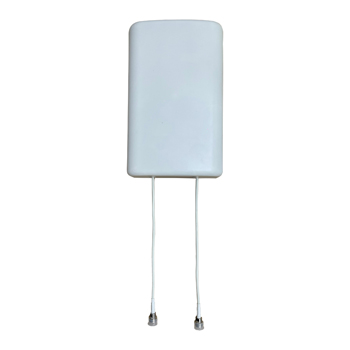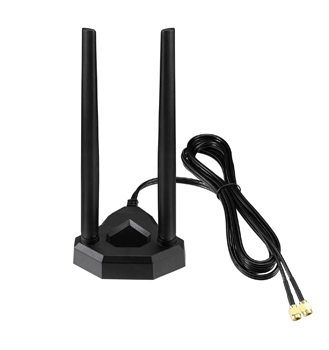LoRa technology stands for long-range communication and is popular in different IoT verticals and machine-to-machine communications. LoRa antennas are specialized antennas designed to facilitate long-range communication with low power. They are responsible for the transmission of signals over the LoRa technology. LoRa is a technology developed by Semtech Corporation to cater to low-power operation of IoT devices over a long range.
In this article, we will explore the uses and applications of LoRa antennas. Moreover, we will also investigate some of the common types of LoRa antennas and key applications of LoRa antennas in different IoT verticals. Finally, we will outline some of the challenges and future trends in LoRa antennas.
Table of Contents
ToggleUnderstanding LoRa Technology
First, we will investigate the working principle of LoRa technology. LoRa is a long-range low-power communication protocol utilized by IoT devices and in machine-to-machine communication. LoRa technology is based on the Chirp Spread Spectrum (CSS) technology which helps in achieving low-power transmission. CSS technology allows the spread of the signal across a wide frequency range, thus allowing efficient transmission. Another key feature of LoRa technology is the lower data rates. LoRaWAN is referred to as the WAN network built on top of LoRa technology. In summary, the LoRa technology can be summarized on the following key features:
- Low power
- Long range
- Low data rates
Basics of LoRa Antennas
Antennas are crucial elements in modern wireless communication systems, which are responsible for transmitting and receiving information between two destinations. LoRaWAN antennas are specifically designed to operate in LoRa frequencies. LoRa antennas primarily act as transmitters and receivers in LoRaWAN networks. However, LoRa antennas are now used for different sensing and localization applications as well. There are different types of LoRa antennas. The major types are:
- Omni-directional LoRa antennas: These antennas radiate signals with 360-degree coverage and are easy to manufacture and install. They are widely used in LoRaWAN applications such as asset tracking, logistics, and environmental conditions monitoring.
- Directional LoRa antennas: These antennas radiate signals covering a given area or a sector of area. They are complex in design and have different varieties depending on the applications. Some prominent applications include Asset tracking in large warehouses and fleet management. These are ideal for long-range applications.
There are other classifications of LoRa antennas such as indoor and outdoor antennas. They are also classified as integrated and external antennas. Integrated antennas are embedded into a modem or gateway and are equipped with a low coverage distance with a specific direction. External LoRa antennas are used for long-range applications such as smart cities.
Finally, another important factor to be considered on antennas is their placement and mounting as these can affect the performance of the LoRa antenna. There are two common mounting methods:
- Pole mounting: These are mounted vertically and are ideal for long-range communication
- Wall mounting: These are ideally deployed outdoors and can be mounted vertically and horizontally.
Key applications of LoRa antennas
Now let us investigate some of the prominent applications of LoRa antennas. These applications include:
- Smart cities: Smart cities involve connected IoT devices and buildings. This vertical discusses applications such as smart lighting, smart waste management, smart traffic monitoring, smart parking capabilities, and vehicle-to-everything (V2X) communication. LoRa antennas play a crucial role in this vertical with omni-directional antennas used for V2X communication and directional antennas used for smart traffic monitoring and smart parking capabilities.
- Agriculture: LoRa antennas are used for smart agriculture for monitoring applications. These include precision agriculture, livestock tracking, and crop health monitoring. LoRaWAN technology is ideal for these applications due to lower data rates and low power consumption.
- Industrial IoT (IIoT): LoRa antennas are used for asset management and tracking in warehouses and industrial complexes. Moreover, LoRa antennas are also used for machine-to-machine communication, which allows lower data rates over a long range.
- Environmental monitoring: Another vertical in which outdoor LoRa antennas are used. Here LoRa antennas are used for pollution tracking and disaster management systems. LoRaWAN technology is prominent in this vertical due to its long-range operation capability.
- Healthcare: LoRa antennas are also used in smart healthcare applications for smart patient monitoring, wearable device operation, and medical assets tracking.
Advantages of using LoRa antennas
With the use of LoRaWAN technology, we can experience a multitude of advantages. These advantages include:
- Long-range communication capabilities: This is the most prominent advantage utilized in most LoRaWAN applications. Due to their CSS technology, LoRa antennas can efficiently transmit over a large distance.
- Low power consumption: LoRaWAN with CSS technology transmits data as data packets chirps facilitating low power transmission. Low power consumption of LoRa antennas is ideal for small IoT device applications in agriculture, and environmental monitoring systems.
- Lower data rates: LoRaWAN is a bandwidth efficient communication protocol. Therefore, applications that require lower data rates are largely benefited from LoRa antennas.
- Cost-effective deployment: Most of the LoRa antennas are deployed cost-effectively as they might need no extra grounding or any other electrical satisfactory conditions for their operation.
- Versatility: LoRa antennas can be used for different applications and are flexible to be upgraded or downgraded when required. LoRa antennas are deployed in different applications ranging from smart crop monitoring to Helium networks.
Challenges and Considerations
Despite their superior advantages and multitude of versatile applications, LoRa antennas face different challenges. Moreover, there are some key factors involved when considering LoRa antennas for your application. These challenges and factors include:
- Signal interference in your environment: It is important to consider any sources of interference and large obstacles in your LoRaWAN network area.
- Regulatory and compliance issues: LoRa antenna users should account for different rules and regulations imposed by regulatory bodies for undisturbed operations. Users are expected to choose the correct operating frequency range depending on their geographical location.
- Antenna selection and placement: Users are expected to choose the correct antenna type depending on their application and place them accordingly. For long-range applications, users can rely on directional and external antennas. For relatively short ranges, users can rely on omnidirectional and integrated antennas.
Future Trends and Developments
Now let us outline some of the prominent plans and developments for LoRa antennas. These include:
- There are different beamforming techniques and MIMO technology advancements in the LoRa antenna design and development sector
- LoRaWAN market is rapidly growing with the growth in the number of IoT devices
- LoRaWAN technology is now integrating with different other existing technologies such as NB-IoT and 5G.
Conclusion
Detailed understanding LoRa antennas is crucial for how we choose and use LoRa antennas. In this article, we discussed the working principle of LoRaWAN technology and LoRa antennas. Then, we outlined some of the types of LoRa antennas and their different applications over different verticals in the IoT industry. Finally different advantages of LoRa antennas were discussed with different challenges faced by this technology.








